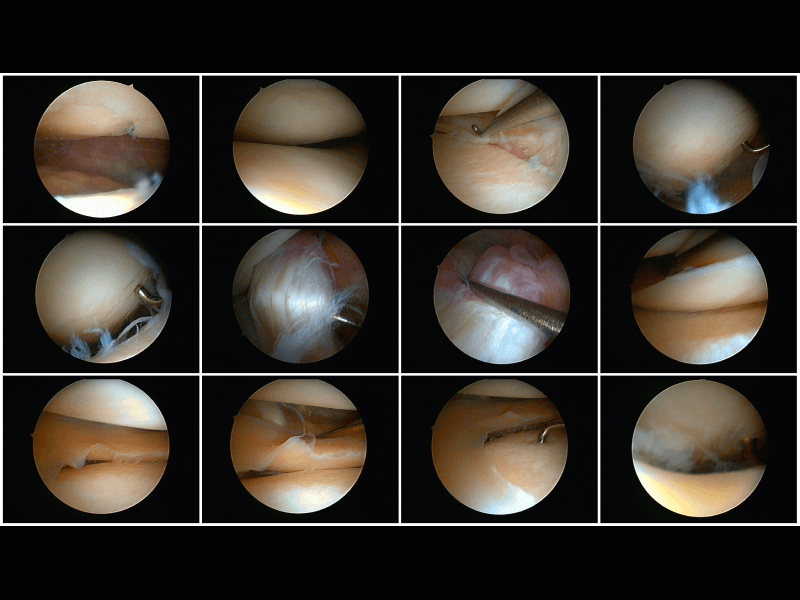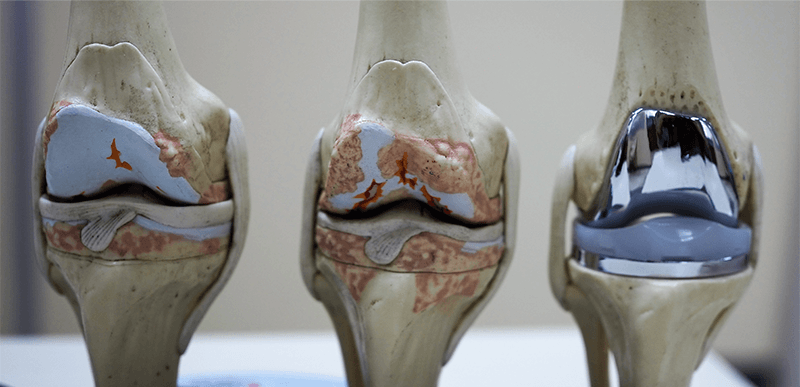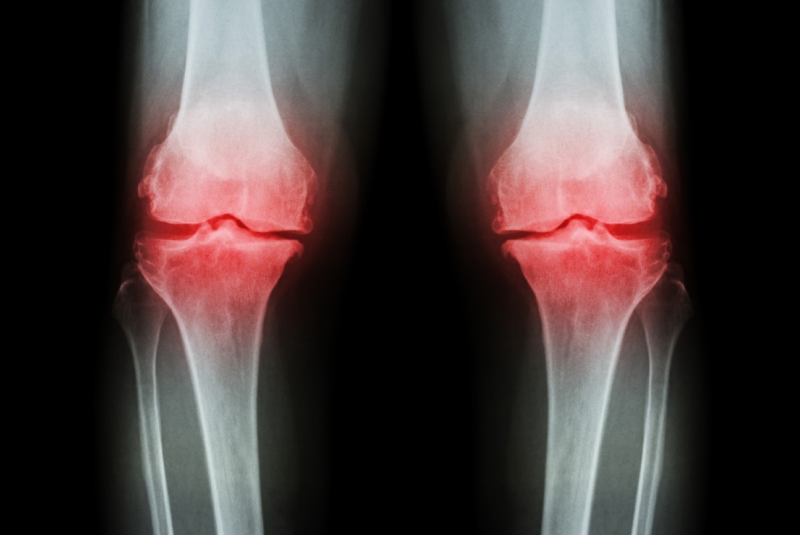
Total knee replacement after a torn meniscus: what you should know
Total knee replacement after a torn meniscus: what you should know https://bestpracticehealth.com/wp-content/uploads/2023/06/banner_torn_meniscus.png 1024 535 Best Practice Health Best Practice Health https://bestpracticehealth.com/wp-content/uploads/2023/06/banner_torn_meniscus.pngBy Grace Lieberman
A torn meniscus is one of the most common knee injuries.
The meniscus cartilage in your knee acts as a shock absorber between your shin and thigh bones. It can tear when someone twists their knee while bearing weight, usually through physical activity. Athletes and older people who have experienced years of wear and tear are the most likely to tear a meniscus, but it can happen to anyone.
Most of the time a meniscal tear heals on its own with the RICE (Rest, Ice, Compression, and Elevation) protocol. However, severe tears may require early arthroscopic surgery. On the other hand, we recently told you about A CASE where a total knee replacement was needed up front due to extensive injuries to several of the components of the knee. So, how do you know what is right for you?

The most common surgical procedures for meniscal tears —meniscectomy and meniscal tear repair— are both arthroscopic. During arthroscopy, an orthopedic surgeon inserts a miniature camera through an incision in the knee. The images the surgeon sees during an arthroscopic knee procedure are shown above. Once they can see inside the knee, an orthopedic surgeon who specializes in sports medicine either removes the damaged tissue (meniscectomy), uses sutures and anchors to repair the torn meniscus (meniscal repair).

Arthroscopic knee surgery is best done by board certified orthopedic surgeons who specialize in sports medicine.
Not everyone needs arthroscopic surgery. “There are other things you can do,” said Dr. Phil Bennion, an orthopedic surgeon specializing in sports medicine. Stem cell and viscoelastic (hyaluronic acid like Synvisc) injections are also helpful for some patients. As time passes, injection therapy may play a role in treating chronic knee pain due to an older meniscal tear. “We now know that platelets rich plasma outperforms viscosupplemenation for the treatment of knee pain due to moderate arthritis,” Dr. Bennion added.
One thing you should not do is get a steroid injection. A recent study from the University of California at San Francisco showed steroid injection to the knee does reduce pain, but it makes arthritis more likely.

Steroid injection in the knee feels good but increases your risk of arthritis
Because the meniscus acts as a shock absorber for the knee, meniscal tears can also accelerate osteoarthritis even after healing. “It’s common for patients with knee arthritis to have a history of a previous meniscus tear or even surgery,” said Dr. Dan Galat, an orthopedic surgeon in Scottsdale, Arizona. “Altered forces in the knee joint from a meniscal injury can accelerate wear and tear of the joint.”
Ultimately, if arthritis progresses to a point where both physical therapy and oral medications do not work, knee replacement surgery is required. A study from the National Institutes of Health showed that just under 19% of the patients that underwent arthroscopic meniscectomy had knee replacement surgery in the same knee. For patients with knee osteoarthritis arthroscopic knee surgery with meniscectomy, the risk of a future knee replacement surgery is threefold.

Total knee replacement surgery
Total and partial knee replacement surgery reliably relieves knee pain due to severe arthritis. Dr. Dan Galat specializes in minimally invasive knee replacement surgery. In his experience, “If conservative treatments fail, and a patient has daily, activity-limiting pain, a partial or total knee replacement can restore pain-free activity.”
During a total knee replacement, orthopedic surgeons like Dr. Galat remove all damaged cartilage from the knee and insert two metal implants- one for the leg and another for the thigh bones- with a plastic spacer in between. Knee replacement is typically done as a last resort after all nonsurgical options have proven ineffective. The surgery takes around 100 minutes and is typically done in an ambulatory surgery center under spinal anesthesia — so a hospital admission is not necessary.
Most patients recover from total knee replacement surgery in a few weeks. A walker is helpful for the first few days; you should be walking in thirty-minute stretches within a few weeks. While some patients return to light duty in a week or less, most take 2-3 weeks off before returning to work full time.
Some surgeons restrict patients from returning to running after total knee replacement, while others have no permanent restrictions. So, it is you select an orthopedic surgeon whose practice aligns with your goals. All manmade implants eventually wear out; however, data from the Australian registry shows a new knee has a greater than 92% chance of lasting at least 20 years.

Severe knee pain due to arthritis should be treated by total knee replacement surgery for those who fail conservative care. Find an experienced orthopedic surgeon who uses robotic assistance, and a minimally invasive approach in an outpatient setting.
The important thing is to get it done. “Total knee replacement is very effective,” said Dr. Brandon Gough, MD, Orthopedic surgeon who specializes in knee replacement. “Meniscus tears often lead to accelerated arthritis,” Dr. Gough added. “Once this happens, total knee replacement is the correct and most effective final treatment option for this condition.”
How to avoid arthritis and total knee replacement after a torn meniscus
While total knee replacement is effective, it’s not inevitable. Your best chance of avoiding arthritis after a meniscal tear is to have it repaired, but not everyone is a candidate. For a repaired meniscal tear to heal there must be sufficient blood supply to your knee. The blood supply decreases with age. Most orthopedic surgeons are reluctant to repair a torn meniscus in patients over 50 years of age. In addition, not all tears can be repaired in the first place. Best practice is for patients with a meniscal tear to see a board-certified orthopedic surgeon who specializes in sports medicine to find out if you are a candidate for arthroscopic meniscal tear repair.
Because meniscal tears are common and easy to incur, treatment and recovery can look very different between individuals. Some patients can fully recover to pre-injury ability with proper rest and some physical therapy. Others may require surgery and a longer timeline to get back to normal.

For those who undergo surgery, complete recovery can take six months or more.
The first step to protecting yourself after meniscal surgery is dedicating yourself to recovery. Strictly follow doctor’s recommendations of rest and physical therapy. Additionally, stay in close communication with your doctor to ensure that recovery is going as planned.
Taking recovery slowly and approaching milestones with an abundance of caution is important to restore normal function. Avoid overexertion as much as possible and always consult your doctor before introducing new activity to your routine.
Once you have fully recovered from surgery, maintaining your joint health can reduce the risk of further injury. Arthritis can be an unavoidable consequence of age and lifestyle, but there are measures you can take to reduce and alleviate it.
Arthritis prevention
There is no way to eliminate arthritis risk, but the best defense is maintaining healthy habits.
Arthritis comes in many forms and degrees of severity, but in all cases, it causes swelling, pain, stiffness, and decreased range of motion in joints. To combat it, it is important to keep your joints strong and minimize pressure on them.
A regular exercise schedule can help keep muscles strong and limber to better support the rest of the body. On average, doctors recommend about 30 minutes of exercise five days a week. For arthritis prevention, stick with low-impact activities such as swimming, walking, or yoga. Daily gentle stretching also helps keep joints limber and maintains range of motion.
Diet is also an important aspect of keeping joints healthy, especially as you age. Maintaining a healthy weight is important to minimize pressure on your joints. Additionally, an anti-inflammatory diet may reduce joint swelling and pain. Maintaining a healthy diet in collaboration with your doctor can help you stay a healthy weight and ensure you receive a balanced nutrient intake. Specifically, eating fish two to three times a week can help increase Omega-3s and reduce inflammation.
Need help starting an anti-inflammatory diet? Check here.
Everyone’s recovery and preventative care journey is different. The best way to avoid complications is to follow a healthy routine and stay informed.
Dealing with the aftereffects of a meniscal tear and other health complications that come with aging or injury are hard enough. Following these tips can help lighten your load and ensure you are in the best state possible to manage your health.
Grace Lieberman is a heath care reporter based in Phoenix, Arizona.
- Posted In:
- Meniscal Tear








